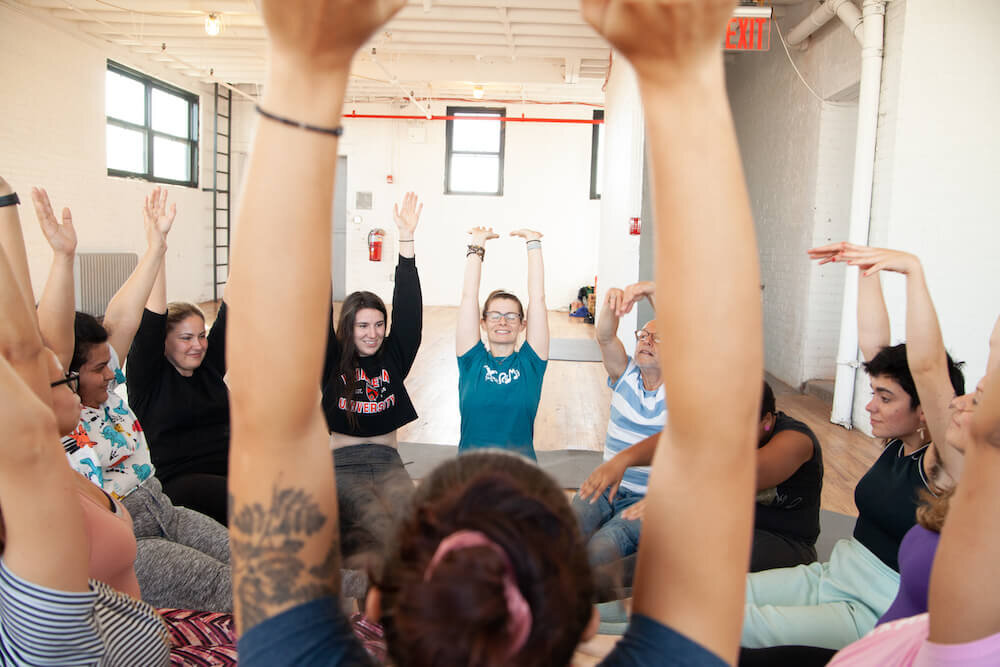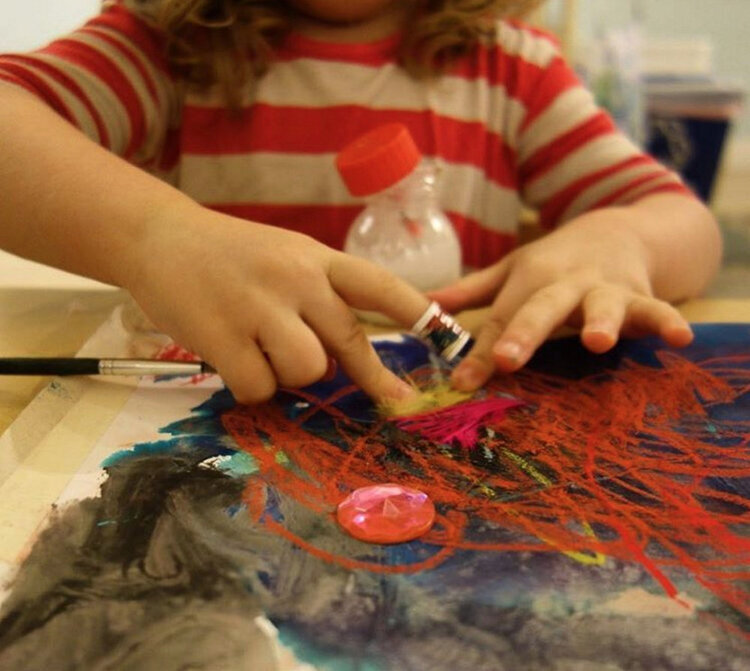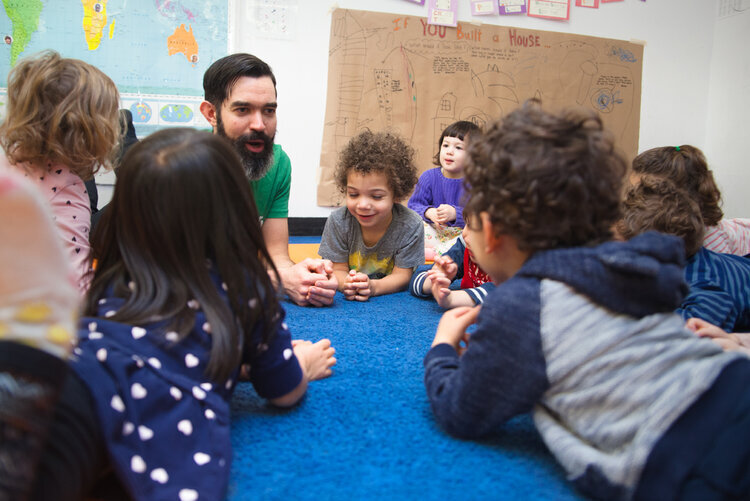7 Unique Qualities of a Great Early Childhood Educator
We all want the best for our little ones. Since early education plays an integral part in child development, finding a good, quality teacher and learning environment for our young learners is an understandable high priority for parents and educators.
But where do we begin? How do we ensure the classroom or learning environment we’ve selected (or as educators, provide) is conducive to learning and growing both in and out of the classroom?
After years of working with preschools, elementary schools, daycares, and community spaces to provide effective music, movement and mindfulness curriculum for students, we’ve learned there are seven unique qualities that make for an effective preschool teacher and early childhood educator.
1. A great educator finds comfort in chaos
The best early education meets children where they are. It can be messy, loud, random and it definitely colors outside the lines. The ability to be the calm in the middle of the storm and fully appreciate the learning that happens in chaotic moments is a must if you want to be an effective educator.
For those moments when you need calm, we have a great list of calming activities for children that’ll help the classroom wind down mindfully.
2. Become a play champion with play-based learning
A great early childhood educator understands both the bliss and educational importance of free, unstructured or “true” play. They’re quick to get involved with children at their level (meaning not just on the floor, but following the children’s logic and understanding), to be silly and to offer their unique perspective into the mix.
In Yo Re Mi classes, we use the Reggio Emilia inquiry-based approach to incorporate play into curriculum-based classroom activities. We allow the children’s ideas to be the vehicle for our journey — the way we’ll travel and explore in service of wellness goals and social-emotional learning.
We constructively create space for children to lead with their curiosity and imagination. While play-based learning looks hands-off, the preparation is careful and the support is immense.
With crafted language of encouragement, the important documentation of each child's thoughts and contributions, and the mindful preparation of a safe space for exploration, the class can focus less on a final result and more on creating, trying, exploring, and observing.
To keep play-based learning in mind, remember: the journey IS the destination. Instead of defining an activity as "coloring red, green and yellow apples," it could be described as "exploring colors and other properties through an apple study."
3. An effective teacher views children as collaborators
When we treat children as equals — not upholding an arbitrary and false power dynamic (“Do this because I said so“) — we make space for them to take the lead… for their own good!
An effective educator knows that adults have just as much to learn from kids as we have to teach them. They value children’s contributions to their learning process, with a child’s opinion or observation taking center stage, overtaking the original provocation, and guiding the conversation in a class.
When we allow children to collaborate and take lead, we encourage individuality, spark curiosity, and welcome limitless growth.
4. Offers clear, engaged and fact-based communication
A great teacher understands that noticing a child’s effort has far greater benefits than empty phrases like “good job.” Teachers use specific feedback which reflects what they see, notice, or wonder — all in service of helping the child feel seen, heard, and understood.
Clear observations provide an opportunity for the child’s self-reflection and self-awareness.
Example: A child who hears “good job” knows a teacher LIKES what they did…whatever it was, since “good job” doesn’t exactly tell a child WHAT it is they did well.
A teacher who notices “You used seven different colors in that painting” gives the child a perspective on their work, and the specificity helps fuel further inquiry.
The child is now aware of what is being recognized, and awareness is a constructive place from which to grow, go deeper, and take on new challenges.
“I used seven different colors in my painting”
“I stood on one foot for twelve seconds”
“When we’re all talking at once it’s hard to know who to listen to.”
Fact-based communication always works — facts are indisputable, and not manipulative. The difference from “good job” to “you stacked eight blocks” requires an incredible presence of mind, and the greatest teachers work hard to stay specific.
Additionally, a teacher who hears a child’s opinion, and encourages with, “Tell me more about that!” essentially says, “I hear you. Your opinion matters. I want to hear what you have to say.”
What child doesn’t need more of that?
5. A great educator values authenticity
When we come from a place of truth, we model self-awareness and self-motivation. We help children shine their own light by welcoming ideas, being present with each child, as well as collaborating and training with other educators.
An ideal educator works with other teachers with one main priority: “What’s the best way to get these children what they need?” Every year we celebrate collaborative learning by welcoming educators to request professional development workshops and children’s yoga teacher training.
6. Adaptability is a strength
Sometimes a lesson plan, storybook or activity just isn’t working. Sometimes the art project doesn’t look the way we imagined it would. But, if we’re putting the process ahead of the product, then we must to be adaptable and accepting of these differences.
As educators, it is important to stop. Adapt.
When a teacher is too tied to plans or results, they may lose sight of whats important.
Teachers who are more process-based instead of product-based, talk about it - a LOT! “Wow, this story isn’t the right fit for our energy right now. Let’s dance for a few minutes and try a different story later.”
In fact, by sharing with the students, inviting them into the process, we won’t have to be adaptable all by ourselves!
Modeling adaptability inspires children to be flexible.
This can ease transitions between activities or classes, aid in dealing with disappointment and stress, and support the development of coping skills for environmental changes at school or home, such as a new student, or dealing with loss.
In our school performance surveys, administrators and teachers who embrace adaptability, collaboration and process-based learning report elevated school performance.
7. They also value parental collaboration
A unique quality of an effective teacher is being able to share the benefits of play-based learning to parents who may themselves be accustomed to rote learning.
Teachers who collaborate and teach parents often find an increase in a continuation of learning at home.
They encourage parents to use language which encourages self-reflection, children to have their own opinions, draw their own conclusions, create their own social codes — and observe effort over praising results. Classroom teachers are in a unique position to positively affect the home environment.
The life skills kids gain in music, movement and mindfulness classes like Yo Re Mi are plentiful. Having an effective early childhood educator with these unique qualities and characteristics helps promote even more growth and development in a supportive learning environment.
Save this post for later!


















